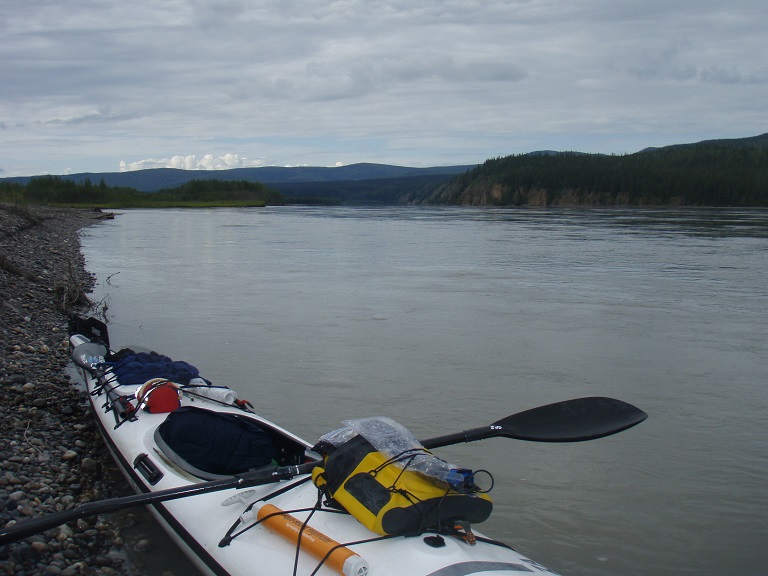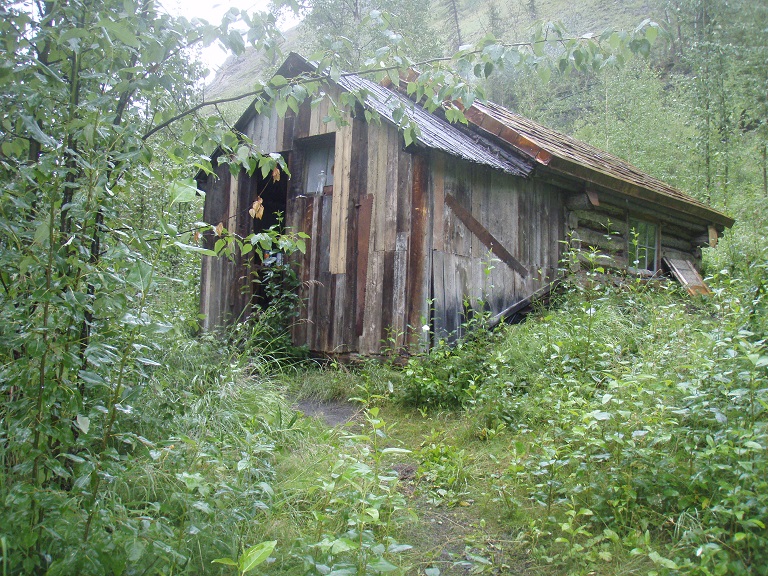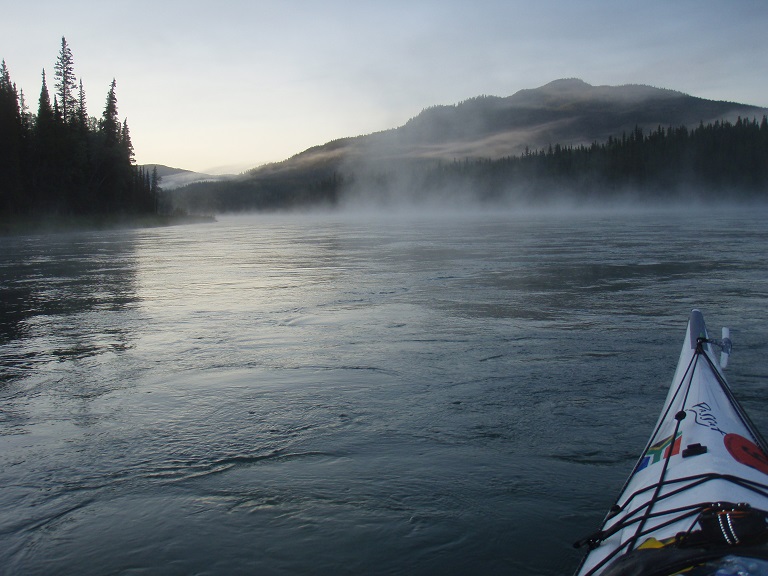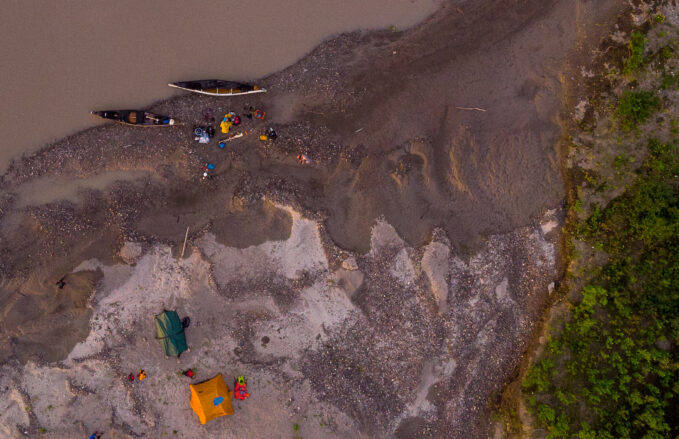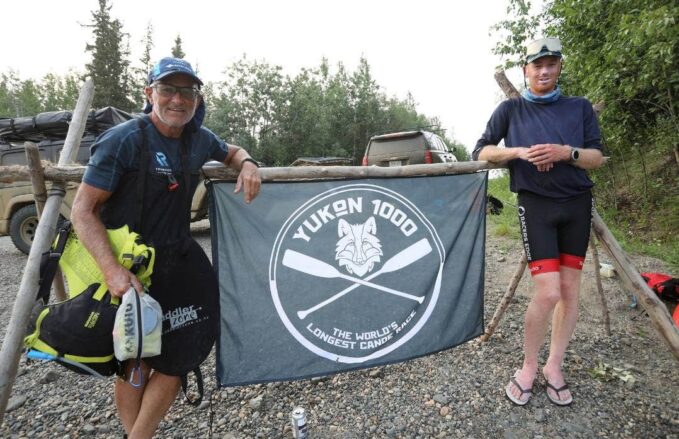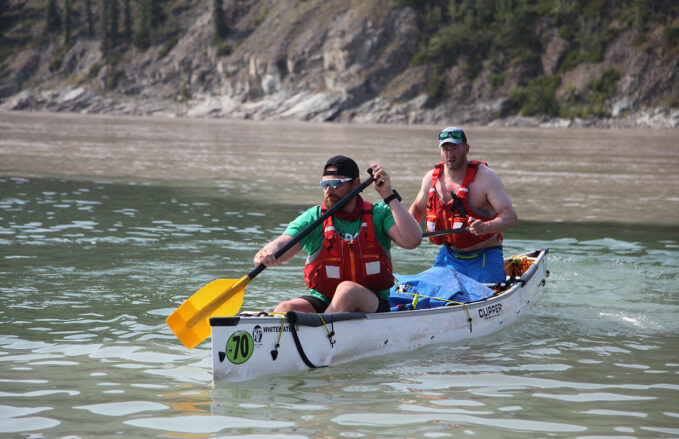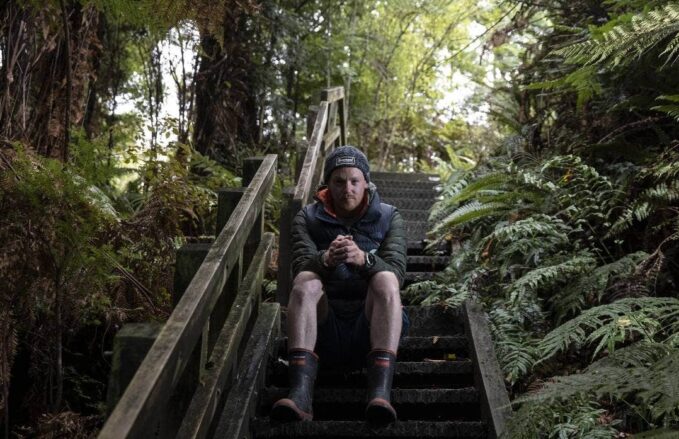
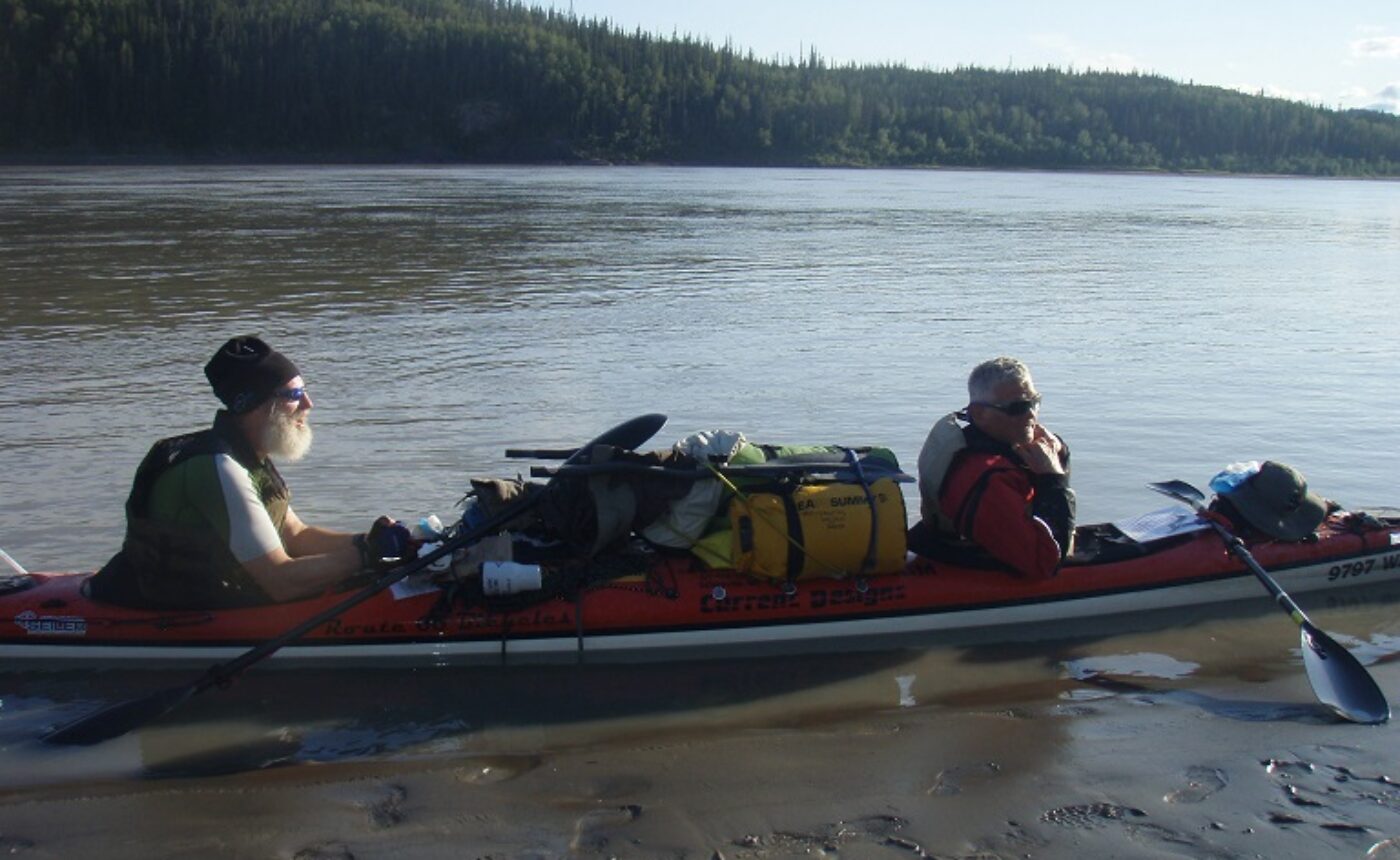
The Yukon River, By Donovan Boshoff – 2014 Kayak racer
My name is Donovan Boshoff and I am a 43 year old South African. When Duncan Paul and I took part in the Yukon 1000 in 2014 we were the first South African’s to do so and I believe to date we are still the only South African’s to have taken part. Duncan had previously completed two Yukon 750s and was looking for a partner to commit to the 6 months of training in preparation for the Yukon 1000. I jumped at the opportunity. I was running my own business at the time and this allowed me to free up the hours required.
My paddling experience is quite varied, having taken part in numerous K1 and K2 Races including 8 Duzi Canoe marathons as well as having worked as a White Water Guide. But paddling has never been my number one sport, having spend more time on a mountain bike and running trails.
Regardless of your fitness level, the Yukon 1000 is always going to be a daunting challenge that will test more than just your physical ability. But the reward is worth it, and although I would not have said so during the last half of 2014, I would now love to be back at the starting line.
So, there we were cruising along, somewhere on the Yukon River in Northern Alaska, when another kayak came paddling past us. It happened just as my partner Duncan Paul, accomplished paddler and raconteur, was getting into the story he was recounting (his oratory skills having been recently enhanced by the intake of another Energy Tablet) and we hadn’t even heard them approaching. Well I say cruising along, but our state was more precisely defined by Duncan a few moments late. Something along the lines of the brain being out of gear and the thumb being placed where the sun’s golden rays could not shine upon it.
The other kayak was team Sam McGee, two Alaskan Locals named Bill Harris and Emit Witt, fellow competitors in the Yukon 1000 Canoe Race. They were one of only two teams we has encountered since 13 teams had set out from Whitehorse, in Canada’s Yukon Territory 5 days before.
Once we had recovered from this intrusion into the private world we had been enjoying, we did what any South African Paddlers would do when faced with a long haul on a flat river and suggested that we ride each other’s wave to save energy. Emit replied that we were welcome to ride their wave, as long as we did it 2 miles behind them. And with that the race (for 4th place overall) was on.
The world’s longest canoe race
Let me take things back a bit to see how we had arrived at this situation. Since committing to the race in January we had put in a productive six months of training. 4 o’clock mornings, 20-hour paddling weeks and a few monster 100km sessions on Midmar Dam had brought us to the beginning of July with the quiet confidence that we had earned our place on the starting line. A week later we were in Whitehorse gathering equipment, preparing our kayak and slowly acclimatising to days of endless daylight.
The race covers 1000mile (1600km) from Whitehorse to a point in Alaska where the Dalton Highway crosses the river. (The reality show “Ice Road Truckers” features that particular Highway.) Teams must be completely self-sufficient and need to leave Whitehorse with provisions to last for 3 weeks. No one can get anything from a Second along the way, and in fact you are unlikely to see anyone else, outside of the few small towns scattered along the way. Teams can spend 18 hours on the river a day with a compulsory 6 hours on the bank to coincide with the hours of dusk (not dark) every evening. Each team’s position is monitored by a GPS tracking device so from anywhere in the world friends and family could log on and check our progress. Someone actually getting to us in the event of us needing help…. not so easy.
The first challenge of the race, both mentally and physically, is the crossing of Lake Laberge. Its’ headwaters are 30km down river from the start and it is 4km wide and 50km long. The week before we set off the wind had been pushing a steady 60km/hour and throwing up a 4-foot swell along the length of the lake. So, it was a pleasant surprise to round the last corner and be greeted by a “gentle” 30km/hour head wind and a rolling 1-foot swell. Even with these relatively gentle conditions, the lake is a lonely expanse and it was a relief to be welcomed back between the banks of the river.
And so, into the routine of 18-hour days on the river. If we were not eating, taking the rare photo or peeing into a bottle, we were paddling. Water bladders where rigged up to allow us to drink without taking out hands off the paddle. Weather, scenery and wildlife all took a back-seat to the goal of moving forward. We topped out with a best daily distance of 243km on day two, but we never dipped below 200km a day.
By day 4 we were suffering but still resolute in our journey. Duncan had a bad case of Trench Foot from his feet being continuously wet. It results in a stabbing pain in the soles of your feet whenever you apply any pressure. Not too bad in the boat, except that he could not operate his set of steering peddles, but a nightmare when he was trying to move around camp at the end of every day. I on the other hand had developed tendinitis in both forearms and they had swelled up like sausages. Wrist guards and painkillers were making paddling bearable but the gripping, twisting and pulling involved in packing and unpacking our kayak and in setting up camp was agony. Between us we were down to one fully functioning individual.
The day before we met Sam McGee had seen a turn for the worse in the weather. Low clouds, gusting winds, steady rain and temperatures hovering around 5 degrees. We had crossed the border into Alaska and had our first “comfort” stop of the race at the town of Eagle. After using the facilities (Long Drop besides the general dealer), clearing customs (Phone on the wall that connects you with an official in Anchorage who asks for your passport number) eating 6 Twinkies and drinking 4 cups of coffee from a vending machine I was ready to set off. The town has been flattened twice in the last fifteen years as the ice breaks up and the water rises with the spring rain. A 6-metre steel wall now lines the river bank to guard against future flooding.
70km down river from Eagle at 9pm that evening we decided to call it a day before serious hypothermia set in. We managed to locate a cabin I had marked on the map at the month of the Nation River. It looked like it could have last been used by prospectors in the gold rush of 1896, but it was warm and dry and had 6-inch nails protruding from the window shutters to deter the bears, so it was perfect. It was early the next morning that we first saw Sam McGee. They had overtaken us after 9pm and were packing up a muddy camp site on the river bank as we paddled pasted, we waved them goodbye thinking that would be last we would see of them.
A 600km Dice
I have heard an awkward, uncoordinated paddling style described as looking like someone beating eggs. Well in that case Sam McGee was whipping up one mean omelette. The infuriating thing was that despite this we could not match them for speed head-to-head. We watched as they slowly pulled away and had to contend ourselves with trying to keep them in our sights. At around 5pm we entered a section of the river known as the Yukon Flats. This section continues for 400km and if looked at on a map resembled a bowl of spaghetti dropped on the floor. The river bed is 10km wide and the water breaks up into hundreds of meandering channels, some of which can take you way off course. The channels are mostly shallow with sandbanks everywhere and keeping to the threads of current is no easy task. Added to this the bank is being constantly eroded and undercut and often collapses into the water, usually taking a couple of Spruce Trees with it to block your path.
We had been pushing hard all day and by 11pm with the setting sun in our eyes we where desperate to find a place to camp. The importance of getting off the river became more apparent to us both when I, in a slightly delirious state, became convinced that we had a Moose swimming under our boat. We had lost sight of Sam McGee, but we knew they couldn’t be too far ahead.
Day 6 was a long slow slog through the Flats. Twice we ran aground on sandbanks and had to go through the exhausting exercise of hauling our boat to deeper water through knee deep mud. But good channel selection was keeping us in touch with Sam McGee and that evening we camped within 200 m of each other. We had 140km left of the Flats and a total of 170km left to finish the race.
Keeping our stops down to 6 hours wasn’t easy, as once you have taken off an hour on each end for unpacking and packing and prepping for the next day, you were lucky to get 4 hours of sleep on whatever muddy or rocky river bank you happen to find yourself on. It was already approaching the six-hour mark when we crawled out of bed the next morning to see Bill and Emit silently finishing off their packing. Having hurriedly shoved everything into or onto the kayak and looking like a pair of Syrian Refugees dreaming of a better life, we hit the water 5 minutes after them. Racing through the Flats is a gambler’s paradise. There is always a different option available which although risky, might reward you well. As we set off, I noticed just such a risky option which could potentially bring us out ahead. But as the current disappeared and we heard the familiar sound of scrapping sand on the bottom of the boat we realise it was not to be.
So that seemed to be that. We had fought hard but lost and we set our minds to the task of getting through the day and finishing the race. After 12 hours of paddling and with 70km left to go we pulled over for a final leg stretch before that last haul. After our first mishap of the day we had stuck to our plotted course and kept up a decent pace all day.
As we prepared to set off who should we see coming around the bend but Sam McGee. We later found out that they had taken some particularly meandering options. So much for just finishing, once again the race was on. Things soon developed into the familiar pattern of them slowly pulling ahead, but with 70km left it felt too far to be upping our pace and energy expenditure and expecting to maintain. This was going to take a gamble. With 5km left before the convergence of the river that marked the end of the Flats the opportunity arose. Sam McGee had taken the outside line on an enormous horse shoe bend and the GPS image showed a tiny channel cutting across the base of the bend. We fought tooth and nail against the current to cover the 600m diagonally across the river in time to slip down this channel. It turned out to be only 2metres wide and no more than a stream and our fully laden sea kayak was not designed for these conditions. But somehow, we kept our nose clear and kept moving and as we re-entered the main channel, we saw that we had created a 500m lead. Time to put the hammer down.
5km intervals as hard as we could with a two-minute rest in between was doing the trick. We where pulling ahead. At 8:30pm we crossed the finish line with a total race time of 7days 8hours 39minute. Sam McGee finished 25 minutes later.
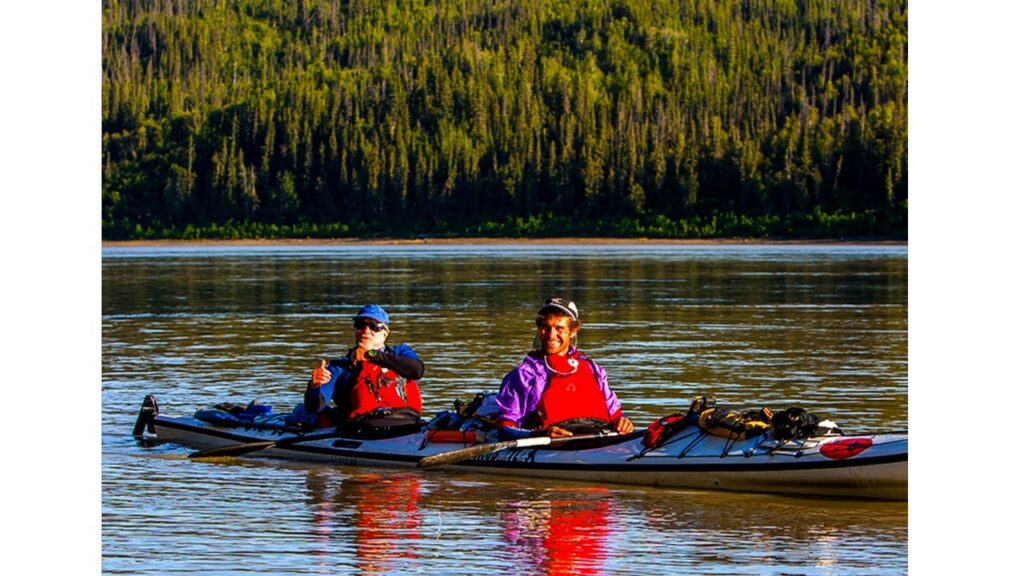
Was it worth it?
5 months later my creaking hips and tender wrists were still telling me that physically is had been an ordeal. But we had successfully completed the longest canoe race in the world and been the first South Africans to do so. We had got to travel through some spectacular Backcountry albeit at quite a rushed pace, and like pioneers and fortune seekers before us we had taken to the Yukon River and paddled into Alaska. And I think we had added a few good tales to Duncan’s repertoire.

